- SEA LIFE Sydney Aquarium Tickets
- Sydney Opera House Tours
- Scenic World Tickets
- Sydney to Blue Mountain Tours
- Sydney Tower Eye Tickets
- Taronga Zoo Tickets
- Sydney Zoo Tickets
- WILD LIFE Sydney Zoo Tickets
- Featherdale Wildlife Park Tickets
- Madame Tussauds Tickets
- Big Bus Sydney Hop-on Hop-off Tours
- Skydive Sydney Tickets
- Australian National Maritime Museum Tickets
- Australian Reptile Park Tickets
- Hunter Valley Wine Tours
Best spots for whale watching in Sydney | Land or sea, here’s where to go
Where’s the best place to watch whales in Sydney: From land or at sea?
Both land and sea offer memorable ways to watch the whales, but your choice depends on the kind of experience you're after.
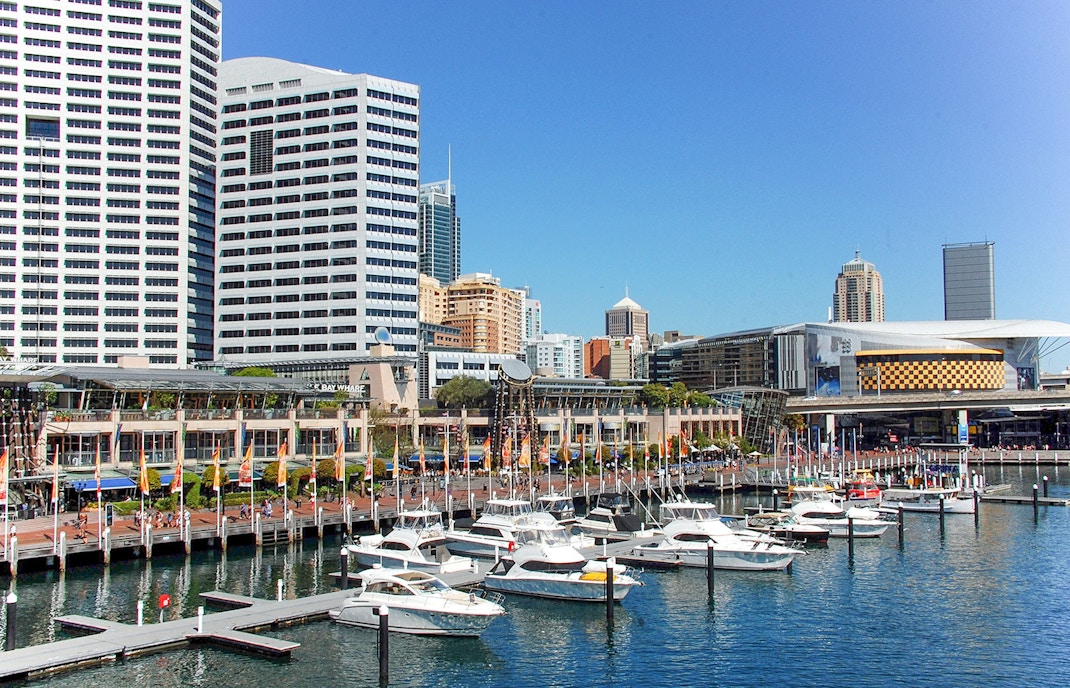
From land
If flexibility and cost-free views are your priority, watching from shore is a solid option. Sydney’s coastline is lined with dramatic cliffs and headlands. Places like North Head, Cape Solander, and the Bondi to Coogee walk offer sweeping vantage points. The big win? It’s free and spontaneous. But the challenge is that whales don’t always swim close to shore. You’ll need sharp eyes, binoculars, and a bit of luck. Sometimes they breach on the horizon and other times they slip past unnoticed. It’s all part of the thrill, but not the most reliable bet if whale watching is your main goal.
From sea
Cruise tours, on the other hand, take you right into the whales’ path. Departing from Circular Quay, Darling Harbour, and other key points around the harbour, these boats head beyond Sydney Heads where sightings are far more common. Sightings are virtually guaranteed (with return-trip promised if not), and on lucky days, you might even witness whale “mugging,” where the whales approach the boat out of curiosity. Plus, you’ll get to enjoy the experience from a comfortable vessel, with indoor seating, outdoor decks, live commentary, and optional breakfast or lunch.
Prime shoreline viewing locations
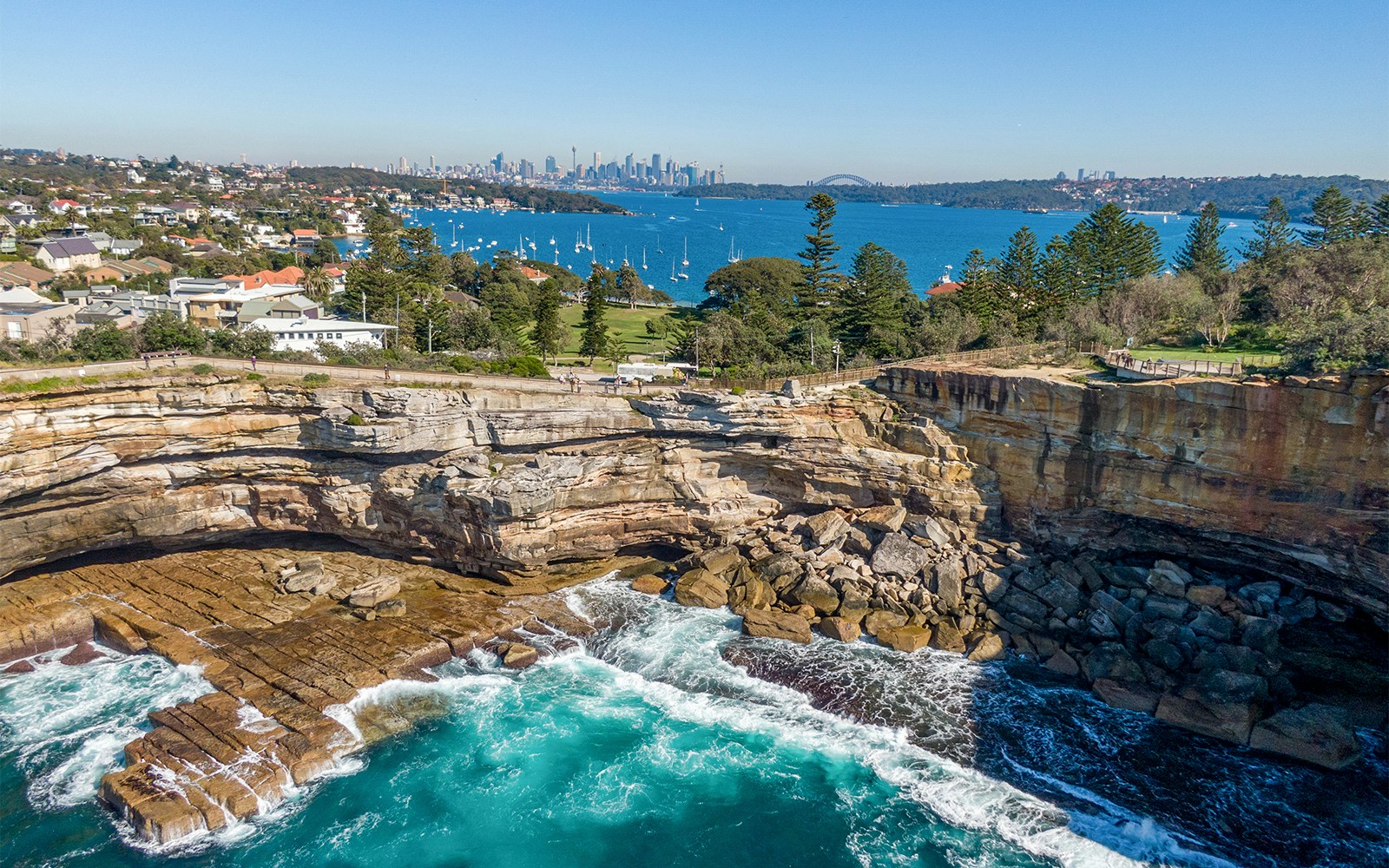
Where do whale watching cruises go?
If you’ve already chosen your boarding point, here’s what happens next once you’re aboard:
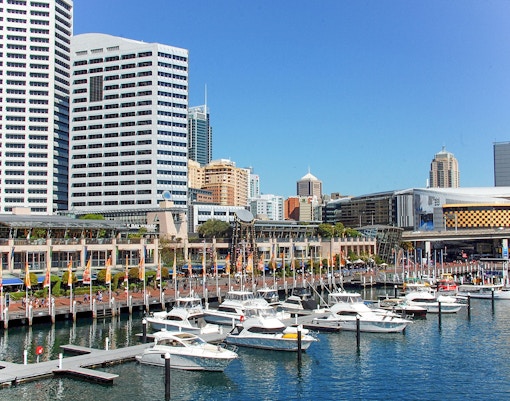
Leaving the harbour
Most tours start from Circular Quay, Darling Harbour, or Manly Wharf, cruising slowly past icon sights like Sydney Opera House, Harbour Bridge, Fort Denison, and Bradley’s Head before making their way toward Sydney Heads.
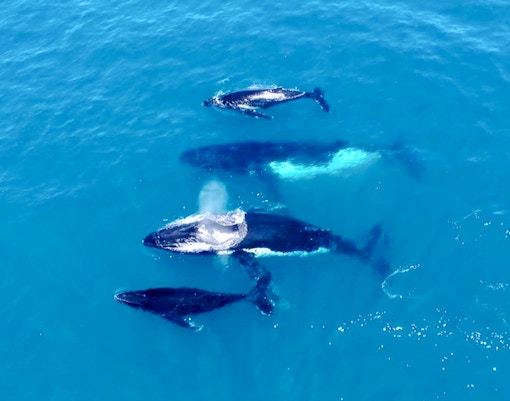
Out to whale country
Once past the Heads, vessels head into deeper water between 3 and 10 nautical miles offshore. This aligns directly with migration lanes used by humpbacks as they ride currents such as the East Australian Current northbound and the colder feeder currents southbound. Operators respect legal marine rules, keeping about 100 m away and 300 m if calves are present, cruising slowly to avoid disturbing them.
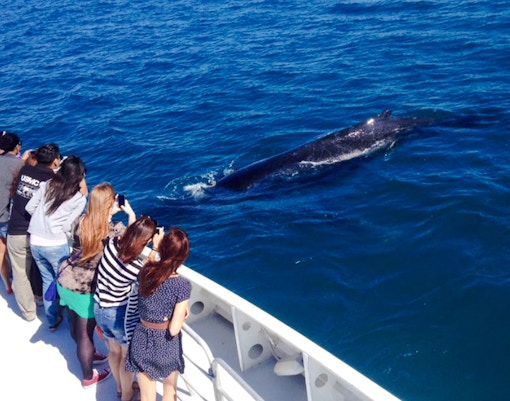
How far & where exactly
Tours typically reach the continental shelf edge, getting you close to active pods. Some operators boast open-ocean access within 20 minutes of departure, making fast inflatable vessels and catamarans ideal for getting in on the action.
Departure Points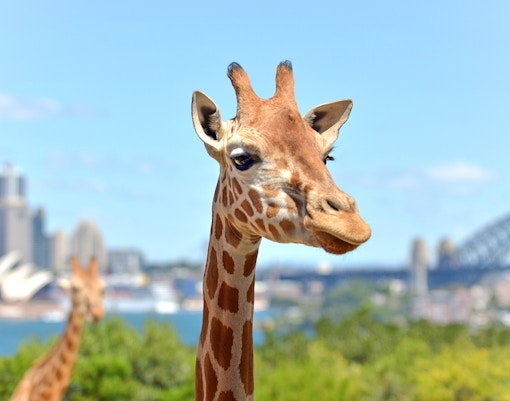
Optional add-ons
Looking to extend the day? Many cruises from Circular Quay include optional add-ons like Taronga Zoo entry and ferry passage. Booked around 9:30 am, they’ll cruise past the Heads, drop you at the Taronga Wharf, and offer a Rocket Ferry ride back, making for a full wildlife-themed day out.
Recommended tours:
- Sydney Whale Watching Cruise + Taronga Zoo Tickets
- Sydney Whale Watching Cruise with 2-Day Hop-On Hop-Off Ferry Pass
Frequently asked questions about best whale watching spots in Sydney
The whale watching season runs from mid-May to November, but the peak months are June and July when humpback whales migrate north and often swim closer to the coast.
At some spots like Cape Solander, whales have been seen as close as 200 meters offshore. In other areas, such as North Head and Bondi cliffs, they’re usually a few hundred meters out, so binoculars are helpful.
Yes! Cape Solander and Fairfax Lookout at North Head are wheelchair-friendly with paved paths and viewing platforms. Some other spots like Barrenjoey and Royal National Park trails may involve steps or uneven ground.
Most locations are free to visit, but some like Cape Solander and Royal National Park charge national park entry or parking fees. If you’re taking public transport, ferry or bus costs may apply.
Many spots are accessible by train, bus, or ferry. For example, you can take a ferry to Manly and walk to North Head, or catch a bus to La Perouse for Henry Head. Cape Solander is best reached by car or a mix of train + taxi.
If you want to avoid crowds, head to Long Reef Headland, Henry Head, or quieter stretches of the Royal National Park coastal track. These offer peaceful, scenic viewing without the tourist rush.
Absolutely! Many spots like Barrenjoey Lighthouse, South Head, and Wattamolla in Royal NP are part of longer walking trails with great picnic spots, heritage sites, and beach access.
